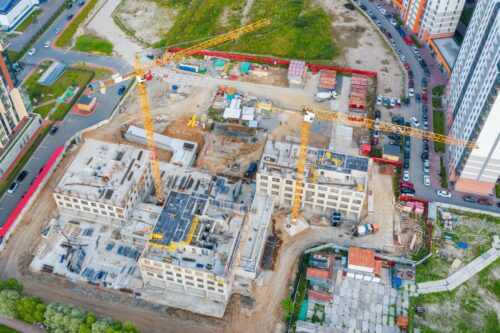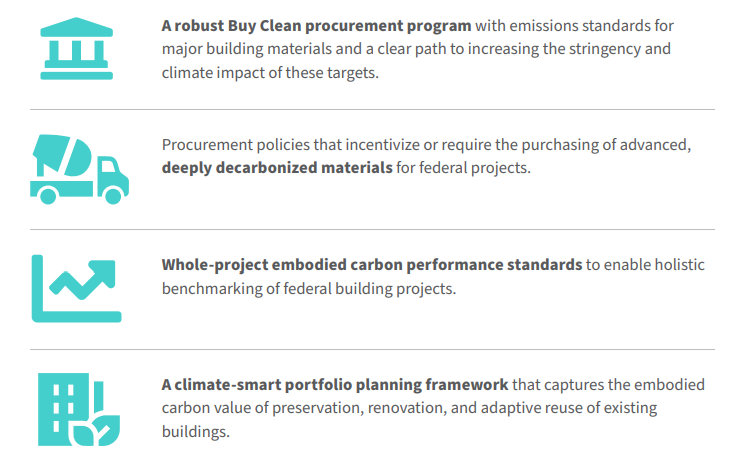
Report | 2022
Roadmap to Reaching Zero Embodied Carbon in Federal Building Projects
How federal agencies can lead on climate through low-embodied-carbon policies and procurement standards.
The US federal government is the largest single purchaser of building construction materials in the United States. RMI’s new roadmap charts a path to achieving zero embodied carbon from federal buildings projects by 2050 and quantifies the emissions reduction benefits of low-carbon building and material programs. With momentum from the Inflation Reduction Act, which includes more than $5 billion to incentivize the use of low-carbon building materials in public projects, the time is ripe for federal action on embodied carbon.
Embodied carbon is the millions of tons of carbon emitted during the extraction, manufacturing, transport, construction, and end-of-life disposal of the materials that make up our buildings, such as concrete, steel, and insulation. Embodied carbon emissions from the building sector alone account for 11 percent of annual global greenhouse gas (GHG) emissions.
In addition to ensuring a robust “Buy Clean Initiative” that prioritizes the use of American-made low-carbon construction materials, our analysis shows that whole-project emissions standards can be set by the federal government to zero or “carbon-positive” levels, creating a framework for agencies to build carbon-storing projects by 2045. Altogether, the impact of these standards could directly reduce GHG emissions by a cumulative 17 million tons of CO2 by 2050, equivalent to removing 3.6 million gas-powered cars from the road for a year.
The core strategies underpinning RMI’s roadmap to zero embodied carbon by 2050 are:
Beyond these strategies, the federal government’s actions will catalyze the market for low-carbon materials and spur industrial decarbonization. This report will help federal agencies understand their broader role in advancing the movement to decarbonize building materials by establishing nationwide standards and databases that will increase consistency in embodied emissions benchmarking. It also aims to assist the federal government to further catalyze markets for disruptive, deeply decarbonized materials, such as zero-carbon cement, zero-carbon steel, mass timber, or bio-based insulation and finish materials, through industrial, trade, and workforce development policies.
Now is the time for the federal government to lead by example on reducing embodied carbon emissions and further align with the Intergovernmental Panel on Climate Change’s call to limit global warming to 1.5°C to avoid the most catastrophic impacts of climate change.
